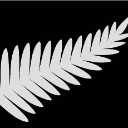- Home
- /
- Programming
- /
- Programming
- /
- Re: Select data with only 4 decimals
- RSS Feed
- Mark Topic as New
- Mark Topic as Read
- Float this Topic for Current User
- Bookmark
- Subscribe
- Mute
- Printer Friendly Page
- Mark as New
- Bookmark
- Subscribe
- Mute
- RSS Feed
- Permalink
- Report Inappropriate Content
Hi, I have a dataset that is interest rate, most of the data is in a 2 decimal format (eg. 2.45), but some rows have a 4 decimals (eg. 2.4678) format. How do I chose the data that has only the 4 decimals? Thanks
Accepted Solutions
- Mark as New
- Bookmark
- Subscribe
- Mute
- RSS Feed
- Permalink
- Report Inappropriate Content
data have;
k=2.4678;
output;
k=2.34;
output;
k=2;
output;
k=2.4450;
output;
k=2.4400;
run;
data want;
set have;
if mod(k*1e4,10);
run;/*or where*/
where mod(k*1e4,10);- Mark as New
- Bookmark
- Subscribe
- Mute
- RSS Feed
- Permalink
- Report Inappropriate Content
data have;
k=2.4678;
output;
k=2.34;
output;
k=2;
output;
k=2.4450;
output;
k=2.4400;
run;
data want;
set have;
if mod(k*1e4,10);
run;/*or where*/
where mod(k*1e4,10);- Mark as New
- Bookmark
- Subscribe
- Mute
- RSS Feed
- Permalink
- Report Inappropriate Content
The solution from @novinosrin fails if k=2.46789.
How about this:
data want;
set have;
ychar=put(k,best12.);
if length(strip(scan(ychar,2,'.')))=4;
run;And @Tom makes a good point too...
Paige Miller
- Mark as New
- Bookmark
- Subscribe
- Mute
- RSS Feed
- Permalink
- Report Inappropriate Content
Yes, that's correct. The solution assumes based upon OP wrote "most of the data is in a 2 decimal format (eg. 2.45), but some rows have a 4 decimals (eg. 2.4678) format."
- Mark as New
- Bookmark
- Subscribe
- Mute
- RSS Feed
- Permalink
- Report Inappropriate Content
- Mark as New
- Bookmark
- Subscribe
- Mute
- RSS Feed
- Permalink
- Report Inappropriate Content
@podarum wrote:
Hi, I have a dataset that is interest rate, most of the data is in a 2 decimal format (eg. 2.45), but some rows have a 4 decimals (eg. 2.4678) format. How do I chose the data that has only the 4 decimals? Thanks
If the field is not a character string then you don't.
How can you tell the difference between a value that was original written as '2.50' and a value written as '2.500'? They are the same number.
- Mark as New
- Bookmark
- Subscribe
- Mute
- RSS Feed
- Permalink
- Report Inappropriate Content
This would solve your problem, technically....you may still have logic issues.
- Mark as New
- Bookmark
- Subscribe
- Mute
- RSS Feed
- Permalink
- Report Inappropriate Content
Another way:
if length( scan( put(VAR,best32. -l), 2, '. ' ) ) = 4;
April 27 – 30 | Gaylord Texan | Grapevine, Texas
Registration is open
Walk in ready to learn. Walk out ready to deliver. This is the data and AI conference you can't afford to miss.
Register now and lock in 2025 pricing—just $495!
Learn how use the CAT functions in SAS to join values from multiple variables into a single value.
Find more tutorials on the SAS Users YouTube channel.
SAS Training: Just a Click Away
Ready to level-up your skills? Choose your own adventure.




